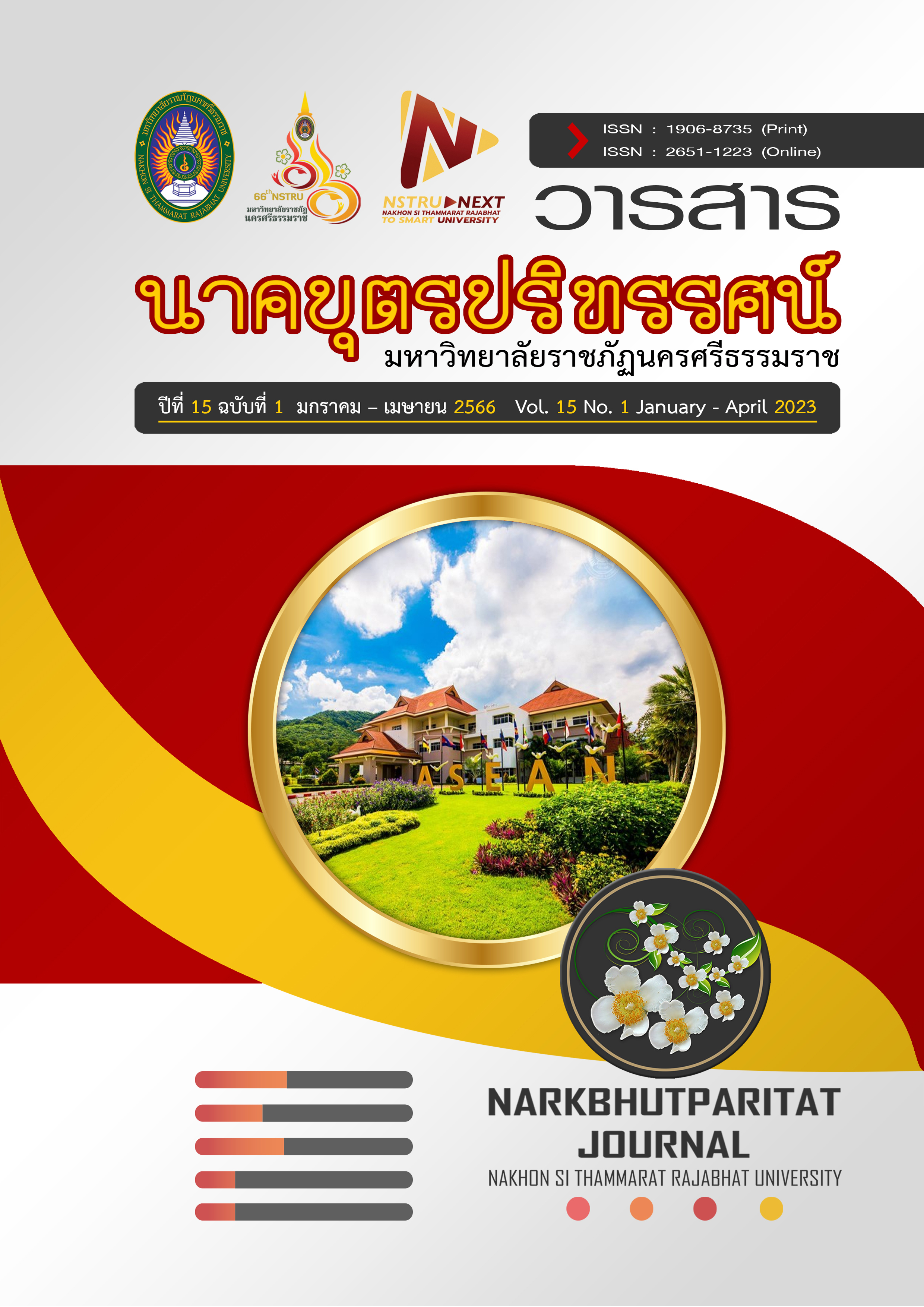The Model For Development Of Tainod Community Market Management As Sustainability For Cultural Tourism
Main Article Content
Abstract
Dissertation on “The model for development of Tainod community market management as sustainability for cultural tourism” The objectives of research were as follows : 1) To study sustainable marketing concepts and theories 2) To study sustainable management of the community market under the node for cultural tourism. 3) to present knowledge about "Model for sustainable development of community market management under the node for cultural tourism" It is a qualitative research, Use the interview form for in-depth interviews and focus group discussion from qualified for 16 persons.
The results of the study indicated that : Sustainability Marketing Concepts and Theory It's a process that leads to marketing for sustainability. using the marketing communication process Changes in beliefs, attitudes, feelings and behaviors of the target audience by managing the market under the node sustainably for cultural tourism based on the four elements of sustainability, namely economic survival. social equality protecting the environment and cultural promotion Relying on sustainable marketing mix by planning, organizing, commanding, coordinating, organizing human resources and follow-up control To lead the process of sustainable marketing in combination with Buddhist principles. with the learning process attitude adjustment promoting local culture Participation of Social Networking Parties and development to bring about change. The results of the integration revealed that the management process according to the principles of development in 4 areas, namely economy, society, environment and culture combined with principles. leading to the development of sustainable community market management under the node for cultural tourism. The knowledge body is “TAINOD MODEL” คือT = TEAM (team work Network), A = ATTITUDE (“work attitude adjustment) , I = INCOME (distribution of income to the community), N=NORM (lifestyle area context), O=OPPORTUNITY (social participation), D = DEVELOPMENT (modification)
Article Details

This work is licensed under a Creative Commons Attribution-NonCommercial-NoDerivatives 4.0 International License.
References
Burawat, K. (2020). Dharma principles and strong community development. Mahamakut Wittayalai University Sirindhorn Wittayalai Campus. Sirindhorn Prismatic Journal. 21(2). 387-394. (in Thai)
Community-Based Sustainable Tourism Strategic Plan 2016-2021. (CBT Thailand). (2016). Retrieved from 2020, Feb 10, www.ryt9.com. (in Thai)
Department of Internal Trade. (2016). Operation Manual Community Marketing Project forLocal Businesses “Market must see”. Bangkok: Ministry of Commerce.
Department of Tourism. (2015). Summary of Tourist Situation, March 2015. Bangkok: Ministry of Tourism and Sports.
Keeratinwanan, S. (2014). The process of strengthening community welfare based on Chinese
identity. Case study of Bo Bae community. (Doctor of Philosophy), Thammasat University Faculty of Social Work, Social Administration, Graduate School.
Keawket, W. (2016). Self-management of the community market. A case study of Khlong Dan Riverside Market, Ranot District, Songkhla Province. (Master of Community Development Thesis), Thammasat University, Department of Community Development.
Ministry of Tourism and Sports. (2015). Thai Tourism Strategy 2015-2017. Retrieved from 2020,
Feb 10, www.mots.go.th/ewt_dl_link.php?nid=7114 (in Thai) Nuanthong, K. (2016). The work of the concept of "Hundred Sai Pinto to Build Networks and Community Market". Retrieved from 2020, March 31, www.pandinthong.com/knowledgebase-dwl-th/381591791792 (in Thai)
Songsomphan, K. (2017). Lard Tai Node. MCOT: Naga.
Tesaniratisai, W. (2020). Marketing Strategies to Support Thailand 4.0 Standard. Western University Research Journal Humanities and Social Sciences, 6(2), 232-243. (in Thai)
Tancharoen, S. (2018). Community-based tourism management and sustainable tourism development. of the Bang Khan Taek community Samut Songkhram Province. Academic Journal of Phetchaburi Rajabhat University, 12(3),149-158. (in Thai)


